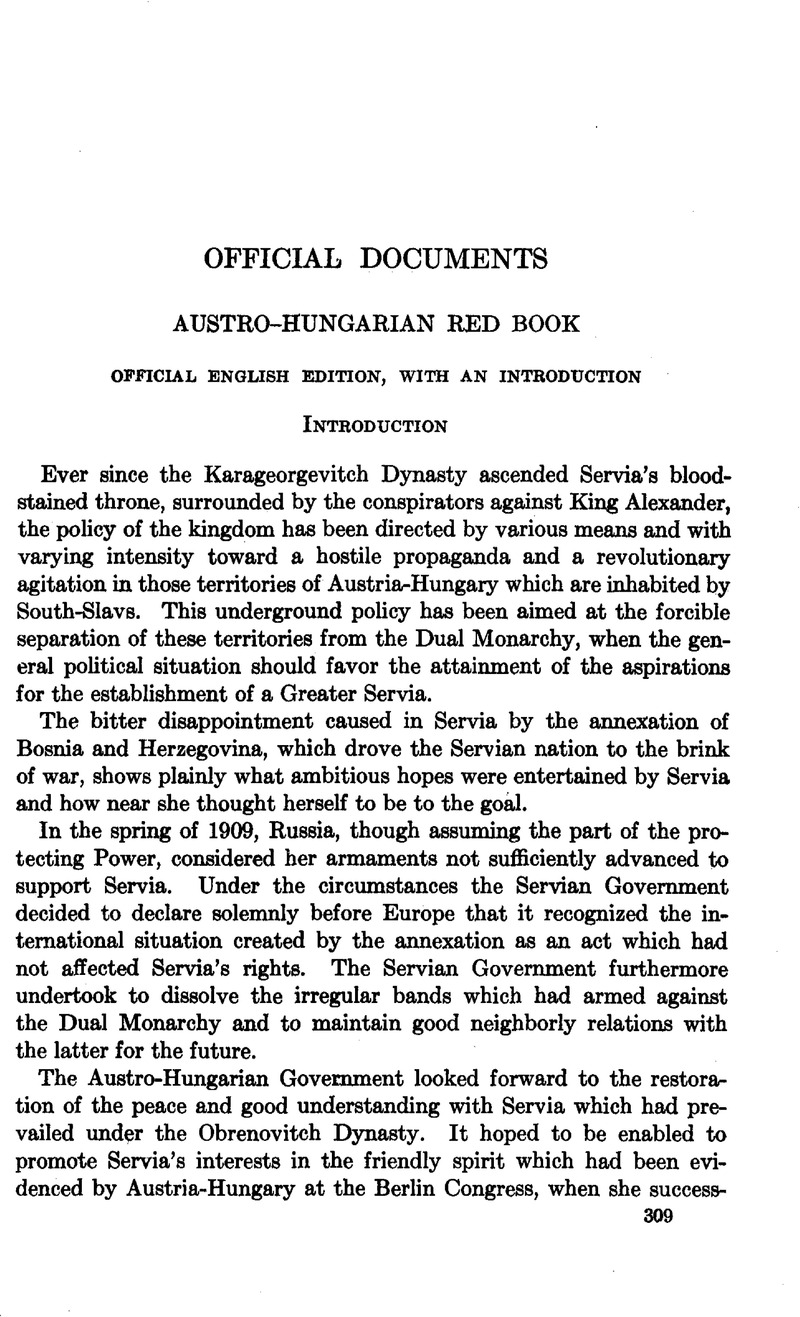Published online by Cambridge University Press: 04 May 2017

1 Milos Obilitch (also Kobilitch), Servian tradition tells, crept into the Turkish camp after the battle of Kossovopolie, or Kossovo, and murdered Sultan Murad (cf. von Kallay, “History of the Serbs,” Vol. 1).
Stephan Sinjelitch, Knez of Resara, played a part in the Servian revolt of 1807–1810. In 1809 Sinpjelitch defended the redoubt of Tschagar against the Turks, and it is said that when he realized he was no match for the superior forces opposed to him numerically, he blew up his position and part of his men, together with many Turks (von Kallay, “The History of the Servian Revolt”).
1 Capt. Kosta Todorovitch was then actually Frontier Commissioner and Director of the Servian Customs Service for the border territory from Raca to Ljuboija.
2 The Servian Major Mika Jankovitch appeared as a Servian delegate at the Prosvjeta celebration.
3 The bombs used against Archduke Francis Ferdinand in the assassination at Serajevo and those which were found in the year 1913 in the Save near Broko, originating from the Royal Servian Arsenal at Kragujevac bear a resemblance to pieces of soap.